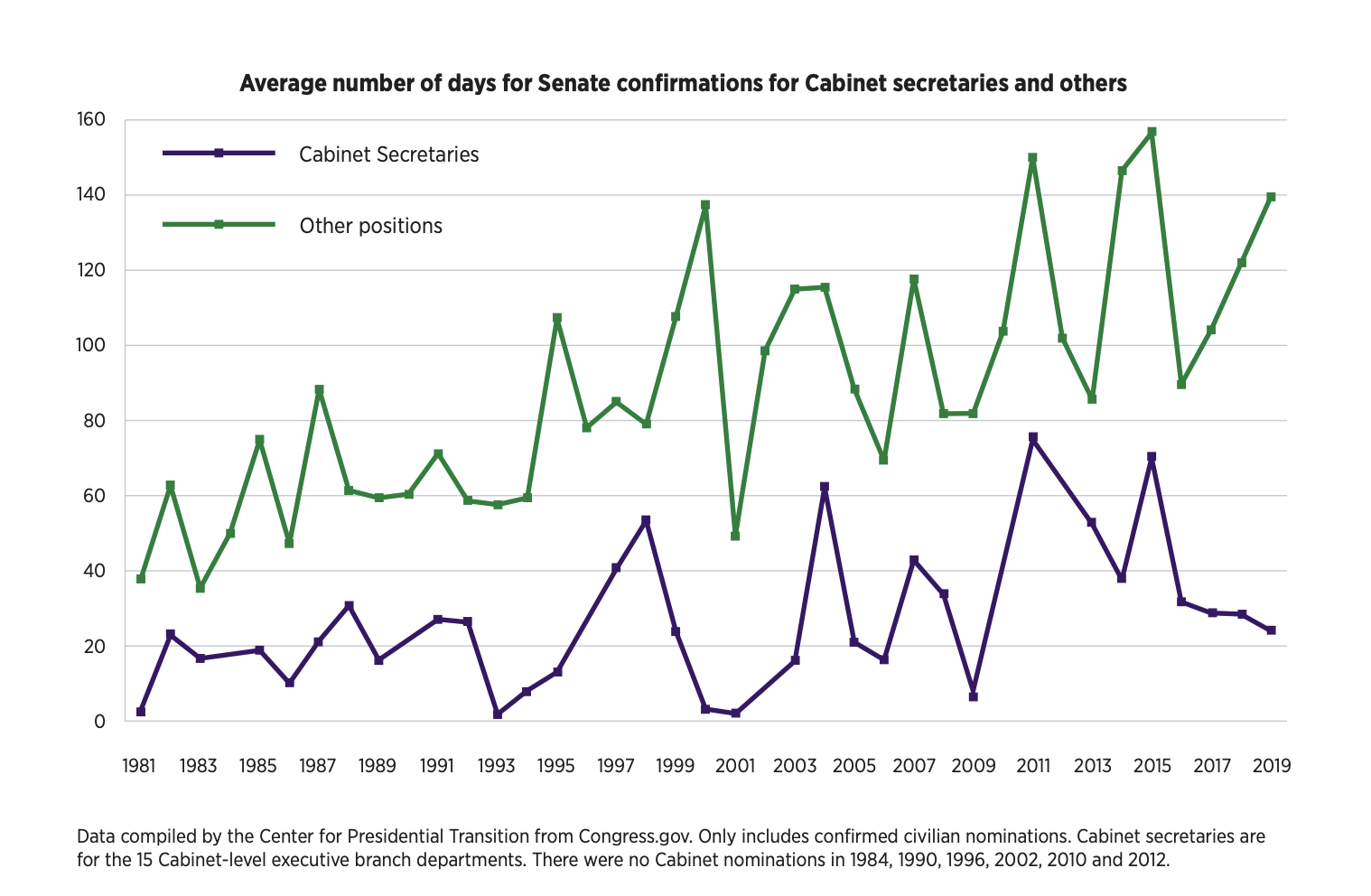
By lazyllama / Shutterstock.com
The Senate Confirmation Process is Twice As Long Today As It Was During the Reagan Era
Partnership for Public Service study highlights the importance of a president’s first and fifth years in getting vacancies filled.
The Senate confirmation process takes twice as long today as it did during the Reagan era, a new study released on Monday revealed.
The study by the nonprofit Partnership for Public Service’s Center for Presidential Transition—unveiled one year from the next Inauguration Day—stressed the importance of advanced planning for new or incumbent administrations because presidents have the most success in filling Senate confirmed positions during their first and fifth years in office.
By examining the 8,551 confirmed presidential nominations from Jan. 20, 1981, through Dec. 31, 2019, the Partnership found the average process under President Trump takes 115 days, compared to 56.4 days under President Reagan. The slow pace is “particularly pronounced” for sub-Cabinet positions, the report said. During Obama’s administration and the first three years of Trump’s administration, sub-Cabinet roles took about 3.5 times as long as Cabinet positions, the study found.
“A major presidential responsibility is to fill more than 1,200 political appointments requiring Senate confirmation,” the report stated. “Few decisions have a greater impact on the success of an administration than the selection of its people in critical leadership roles. This task is especially crucial for presidents beginning their first term, and those transitioning to a second term, as year five of an eight-year term usually coincides with a turnover of more than 40% in senior leadership positions.”
David Marchick, senior counsel at the law firm Covington & Burling, former Clinton administration official and retired Carlyle Group executive, was named director of the transition center in November when the Partnership launched its 2020 efforts. “The focus of most of the press is on Trump, but actually this a 40 year story where it's gotten worse and worse and worse over time,” he told Government Executive on the slow confirmation process.
“Most of those appointments are management or sub-Cabinet policy jobs,” Marchick added. “The vast, vast majority of them are not controversial and so that’s the guts of the political management of various agencies and that’s where we think the problem is most pronounced.”
The chart below from the Partnership for Public Service shows the average time for the Senate to confirm presidential nominations from the Reagan to Trump administrations. The Partnership noted that the study did not include the vetting, background check and security clearance processes that take place before a president sends a formal nomination to the Senate.

The Partnership said the lengthy paperwork for the nominees, filibusters, senators placing “holds” on nominees to bargain with the administration and cloture votes are some of the factors that lead to prolonged confirmations. It found that divided government has not necessarily been a factor because “when the same party controlled the White House and Senate, the average confirmation took 83.3 days compared with 81.2 days when they were controlled by different parties.”
The Partnership made several recommendations on how the Senate and White House can improve the process:
- Transition teams should pick qualified candidates for the Senate confirmed positions before Election Day;
- The Senate should decrease the number of positions that require Senate confirmation;
- Government officials should change the norm that qualified, management-level appointees are replaced with new administrations;
- The White House and nominees need to be timely and accurate in submitting paperwork to the Senate;
- For non-controversial nominees, the Senate should use the “privileged calendar” in which nominees can bypass the full committee process;
- Congress and the White House should work together to fill the Senate-confirmed positions within the first 100 days of a first or second term.
“Given the weight of issues facing our country, both President Trump and the remaining democratic candidates will not only have to campaign vigorously, they will have to begin preparing to govern for the next four years,” said an open letter from the Center for Presidential Transition Advisory Board, a bipartisan group of former government officials. “Failure to plan in advance can not only result in delays filing key jobs, but literally may put the country’s national and economic security at risk.”
As presidential campaigns and the Trump administration could be starting their transition efforts soon, the impeachment trial for President Trump in the Senate began in earnest on Tuesday. When asked about that dynamic, Marchick said, “we’re not really focused on that.” Instead, “we’re focused on the issue of long-term planning...effective planning really begins in the spring.”







